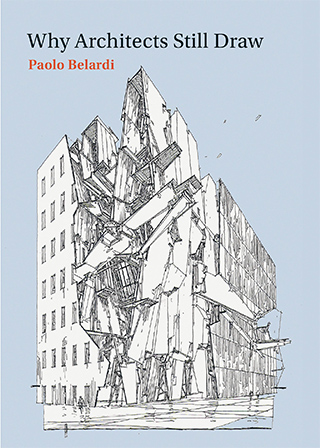How New Ideas Arise

While discussing the problem of how ideas arise in his “Science of Logic,” Hegel stated that “the beginning must be an absolute, or what is synonymous here, an abstract beginning.” Therefore, a new beginning “may not suppose anything, must not be mediated by anything,” but “must be purely and simply an immediacy, or rather merely immediacy itself.” In other words, Hegel declares the utter necessity of intuition, renouncing the control of the rational mind in favor of unconscious foresight. This is perhaps motivated by the fact that self-censoring doesn’t exist in the unconscious or in ideas, which are free to combine in improbable and ever-mixing associations.

There are many paradigms of the inventive act, but Graham Wallas’s 1926 theory outlining the creative process is still particularly interesting today. Wallas, though aware of the fluidity of the creative process, subdivided it into four phases. The first phase, preparation, consists of focusing on the problem, realizing that it can be solved, and collecting and organizing the required information. The second phase, incubation, concerns the manipulation of the collected material not only via sequential reasoning but also through mental feedback circuits. These two phases together are called “maturation,” which might last for years. The third phase, illumination, is concentrated on the epiphany of the solution, and ignores all hierarchies in activating all possible thinking modes: deduction, induction, and abduction. The fourth and final phase, verification, focuses on the logical structure of what has been elaborated so as to make the idea comprehensible, communicable, and feasible. As a result, there is a significant difference between the third phase and the others in terms of both time and intellectual importance, exemplified by Thomas Edison’s belief that “genius is one percent inspiration and ninety-nine percent perspiration.”
Wallas underrated two crucial aspects, though. First, he didn’t give enough importance to the role of the cultural context, which is particularly relevant for the initial point of departure. From Pericles’ Athens to Federico da Montefeltro’s Urbino to Maria Theresa’s Vienna: Imagine how important it was to be born and educated in those precise historical periods, rather than in a nomad camp or the Siberian steppe. Most critically, though, Wallas didn’t investigate the methods of enlightenment enough, omitting a critical analysis of the always-present conditions of inventive genesis. Although it’s not my intention to reduce creativity to an algorithm, let’s try to list these conditions that are always present, documenting them with examples.
Ideas arise from fortuitous circumstances. According to legend, Charles Didelot, maître de ballet and choreographer at London’s King’s Theater, was the first to experiment with the use of en pointe (tiptoe) ballet position in his “Flore et Zéphire” in 1796. It is interesting that this innovation was suggested by a mechanical system, created to lift the prima ballerina and let her “fly” in a circle above the stage. Just before the mechanical lifting, the dancer was hooked to the winch through multiple wires, giving the illusion of weightlessness; the ability to dance in this position facilitated the gradual adoption of the technique of “dancing en pointe” — later named the aérien style by Maria Taglioni.
Ideas arise from observations that are outside of their specific field. The autobiographies of Francis Crick and James Watson, who in 1953 discovered DNA’s double helix structure, described their lengthy research. It was carried out atom by atom in a scenario in which hopes and disappointments alternated, occupying months and months of exhausting calculations, mockup constructions, and chemical manipulations — all without any success. Unexpectedly, the scientists intuited DNA’s spatial organization in a Cambridge cinema room while watching a scene in Robert Siodmak’s “The Spiral Staircase” in which the camera was held above a spiral staircase, exaggerating its cyclical shape. Crick and Watson left the cinema and ran back to the Cavendish Laboratory, confirming shortly thereafter that the spiral geometry was indeed correct, a perfect match.
Ideas arise in the most disparate places. Roland Barthes, for example, preferred the train to the airplane as a place more conducive to invention, whereas French anthropologist Marc Augé maintains that the bicycle is the means of transport most suited to concentrating and having new ideas. Virginia Woolf loved to daydream about novel plots while enjoying a hot bath, whereas Wayne Silby isolated himself inside a room for sensorial deprivation each time he had to solve financial problems.
Ideas can arise at any moment. Wassily Kandinsky, for instance, used to paint only during the day and with incredible regularity. Honoré de Balzac loved to compose with a clear mind, waking up at sunrise, while Antoine Lavoisier preferred to work at night.
Ideas arise from boredom. During a conference on film in Assisi in 1962, Italian director Pier Paolo Pasolini got bored and started absentmindedly flipping through a copy of the Gospel of Matthew. He was struck with how the world of the farmer in the age of Christ was documented in a text that was important not only for its religious fervor but also for its realistic brutality. This inspired the amazing shots of his film “La ricotta” and, later, the revolutionary shots of “Il Vangelo secondo Matteo.” Likewise, J. K. Rowling, author of the popular Harry Potter series, got the idea for her main character during an excruciatingly long train trip on the Manchester-London route, during which she was thinking of her childhood friend Ian Potter.
Ideas arise from oversights. Antoine de Saint-Exupéry, in “The Wisdom of the Sands,” highlights the importance of what he calls a “fertile mistake.” The author talks about creation sometimes being a misstep, sort of like hitting the chisel wrong on the stone, but with a positive (if unexpected) result. In the same way, Alberto Savinio would always talk about the importance of the misprint as bearer of the unexpected, encouraging others to give what seemed like an error a second chance, as some of them turn out successful. The realist painter Grant Wood, to get his inspiration back, used to abandon his brushes to milk the cows on his ranch. Ideas arise when one is lost in thought, making automatic movements.
Ideas arise from habit. As everyone knows, Immanuel Kant’s philosophic speculations were written at mechanical times and with ritual gestures. Fewer people know that Richard Wagner was able to finish the third act of “Tristan und Isolde” only thanks to eating some food that had been prohibited by his doctors. He was served a little plate of milk toast and it made him realize what he was missing, and why he hadn’t been able to write a note for eight days.
Ideas arise from necessity. Jacob Schick, bedridden because of a twisted ankle while stationed in Alaska, realized that the Gillette razor was not practical enough and began to work on a dry razor with its own engine. Schick reached his goal in 1930, and took out a patent on the first electric razor.
Ideas arise from serendipity, when looking for something completely different. The accidental discovery of penicillin by Alexander Fleming is a classic example of serendipity, but another one that shows how important it is to interpret something correctly is provided by the American astronomer James Christy. In 1978 Christy was observing Pluto’s orbit, using a “star scanner” into which he could insert a planet’s picture to measure it. He saw that in the image he had chosen, Pluto seemed to be squished, though with a definite protuberance. He attributed this fact to the low-quality picture and decided to change it. Fate intervened, however. The scanner jammed and Christy needed the help of a technician, who took two hours to fix the instrument. During this time, Christy’s eyes came to see the deformation differently, and that photo, which he had first chalked up to error, became an obsession. While waiting for the technician, the astronomer looked through the photographic archives on Pluto and found an example marked “Pluto image elongated.” Flipping through the years between 1965 and 1970, he found six other similar pictures, confirming his intuition: The photo was correct and showed something that nobody had ever noticed before. The elongations were because Pluto had a moon, Charon.
Ideas arise from dreams. The most famous such episode concerns the chemist Friedrich August Kekulé von Stradonitz. In the middle of the 19th century, Kekulé’s dedication to his research on the structural form of benzene was so intense that he often fell into trances in which images of dancing atoms appeared. In 1856, late one afternoon after hours of attempting to solve the problem, he fell asleep in front of his fireplace. To describe what happened next, I’ll cite Kekulé’s report verbatim:
I was sitting writing on my textbook, but the work did not progress; my thoughts were elsewhere. I turned my chair to the fire and dozed. Again the atoms were gamboling before my eyes. This time the smaller groups kept modestly in the background. My mental eye, rendered more acute by the repeated visions of the kind, could now distinguish larger structures of manifold conformation; long rows sometimes more closely fitted together all twining and twisting in snake-like motion. But look! What was that? One of the snakes had seized hold of its own tail, and the form whirled mockingly before my eyes. As if by a flash of lightning I awoke; and this time also I spent the rest of the night in working out the consequences of the hypothesis.
This time, the work was successful: The snake’s image had suggested the ring structure of the benzene molecule to Kekulé. No less evocative is the story of Giuseppe Tartini, whose “Sonata per violino in sol minore,” also known as “Trillo del diavolo,” is said to have been inspired by a violinist with Mephistophilesque features. Think too of James Watt, who, after a nightmare in which he was hit by a marble, invented a new method to produce lead cones for bullets.
We could keep going, making this list long enough to be impractical for our purposes (our list certainly does not exhaust the subject), because ways that enlightenment arises — a hybrid mix of intentions, chance, and attentions — elude every form of cataloging. Nevertheless, this variety of situations proves that, as Andy Warhol suggested, “ideas are in the air,” viral elements ready to be assimilated by the most sensitive souls. Louis Pasteur used to admonish his students, “Fortune favors the mind that is prepared,” to which Daniel Goleman added, “and passionate.” It is not by chance that Erwin Schrödinger, the 1933 Nobel Prize winner in physics and the father of wave mechanics, wrote in his diary: “I have never had a good idea without having a new girlfriend, too.”
Paolo Belardi, an architect and poet, is Professor in the Department of Civil and Environmental Engineering at the University of Perugia. He has won numerous international prizes, including TECU Architecture Award and the Premio Internazionale di Architettura Andrea Palladio. This article is excerpted from his book “Why Architects Still Draw,” an elegant and ardent defense of drawing by hand as a way of thinking.



